Despite modernization’s desire for agricultural specialization, mixed farming remains one of the oldest techniques of agriculture that is still in existence today. Farmers’ decisions on whether or not to use mixed farming are influenced by several factors. It’s possible to divide elements into external and internal ones. Farmland access, environmental conditions, government regulations, technology advancement, and market trends are external factors.
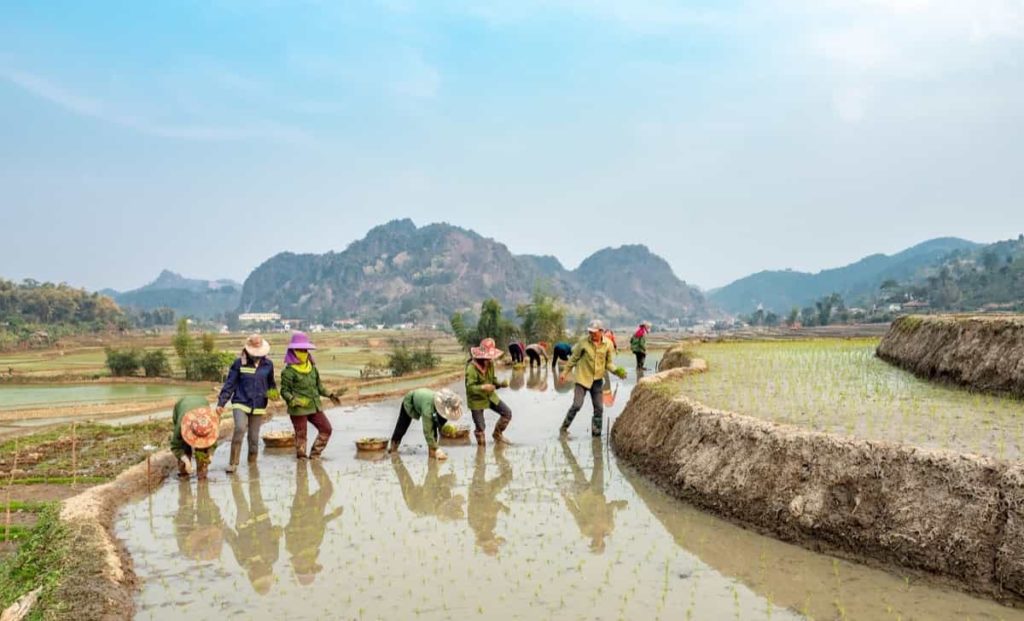
The internal factors are those that the farmers can influence. Resources, labor, farmers’ inventiveness, etc., are internal factors. Crop and livestock farming are both included in the concept of mixed farming. In countries like India, South Africa, China, Central Europe, Canada, Malaysia, Indonesia, Afghanistan, and Russia, agriculture is practiced across Asia. Aside from home usage, nations like the United States and Japan increasingly use it for commercial purposes.
Mixed farming refers to the practice of growing crops and raising livestock simultaneously. Mixing livestock with yields is common, such as a farm that grows cereal grains like wheat or paddy and raises other livestock such as cattle. Cattle manure is often used as a fertilizer for these fields. Let’s check out a way of earning 2 to 3 lakhs from mixed farming.
What are the advantages of mixed farming?
- It results in land maximizing in areas with limited agriculture.
- Diversification and risk control can be achieved using this kind of investment. It is less probable that the farm animals and crops would fail, reducing the risk of a complete loss.
- Increased soil nutrients and fertility can be achieved by incorporating animal dung into the soil.
- A surplus of unwanted crops can be fed to cattle.
- Farm labor is more effectively used as a result.
- Increases in total yield are expected.
- It makes it possible to produce a wide range of foods and nutrients all at one location simultaneously.
- A rise in agricultural earnings and an economic boost at significant results.
What are the disadvantages of mixed farming?
- Buildings and equipment, as well as cattle, need a significant financial outlay.
- It can be costly to maintain animals, especially in terms of vaccinations and care for sickness.
- The expense of upkeep is spread out over time and is often substantially greater.
- Animals may cause havoc on fields if they go free.
- Specialization and expertise are discouraged under this approach.
In case you missed it: Earning 1.5 Crores from Rohu Fish Farming: A Success Story of a Fish Farmer in India
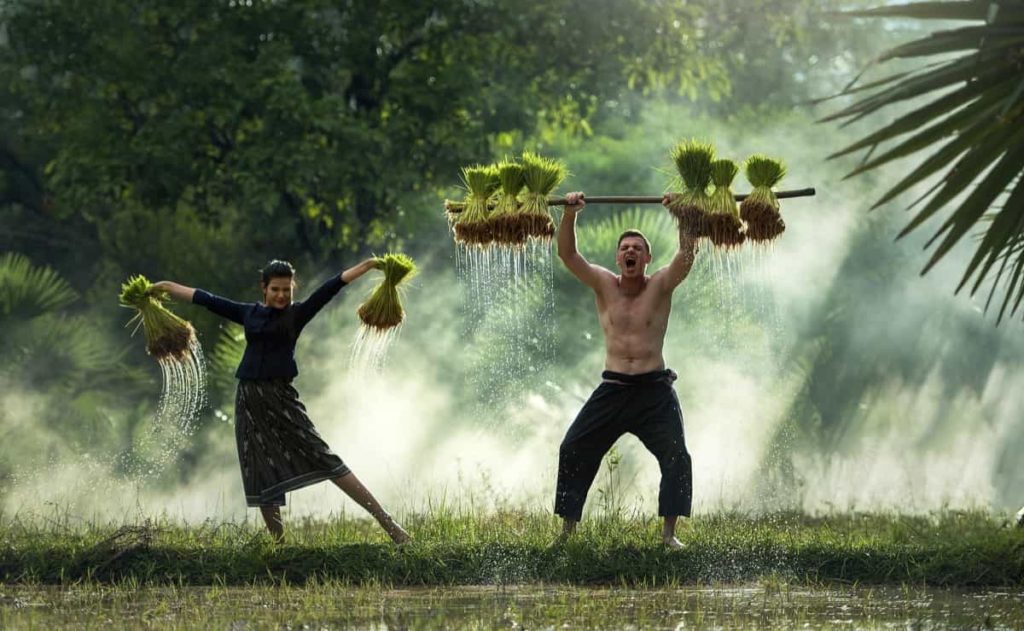
Earning 2 to 3 lakhs from mixed farming
The success story of Mr. Subbaiah
Mr. Subbaiah is a farmer in West Godavari district, Andhra Pradesh. He belongs to a farmer’s family and owns only two acres of land, in which he cultivates paddy. The income he gets from those 2 acres is insufficient to support his family. So, he used to work as labor besides farming. This went on for years, and he was tired of the work he had done and the little amount he was earning, which was just enough to support his family.
He then wanted to give up agriculture and work as a full-time laborer, as he assumed there was no option left. At the same time, he attended an agriculture workshop conducted by government officials in his village. They proposed a mixed farming project, which is very useful for farmers who own small lands. Inspired by this, he began to gain hope. He then started investigating the mixed farming methods in various agricultural offices.
He learned that he could cultivate fish and paddy simultaneously on his two acres of the farm by this method. He finalized his project details with the help of some government agricultural officials and began work. He earns rupees 1 lakh per month from his two-acre mixed farming field. As you are eager to know what he did, let us get into the details.
Land development of Mr. Subbaiah’s farm
For cultivating fish and paddy through the mixed farming method, you need to dig trenches around the paddy field. He renovated his total farm to support the mixed farming method. Mr. Subbaiah says that you need to use 60 cents of land for paddy cultivation for an acre, 20 cents of land to form a trench around the field, and another 20 cents of land should be used as an embankment around the trench.
As he owns two acres of land, he mixed them into one big mixed farming field instead of making it into two separate farms. He uses 120 cents of land for cultivating the paddy, 40 cents of land is used for digging trenches, and another 40 cents of land is used as embankment surrounding the trench. Maintaining one large mixed farm of two acres might be hard to maintain, but the quality of fish and food will be high.
In case you missed it: Earn Crores with Red Sandalwood Farming – Plantation, Height, Weight, Profits, License, and Legality to Sell
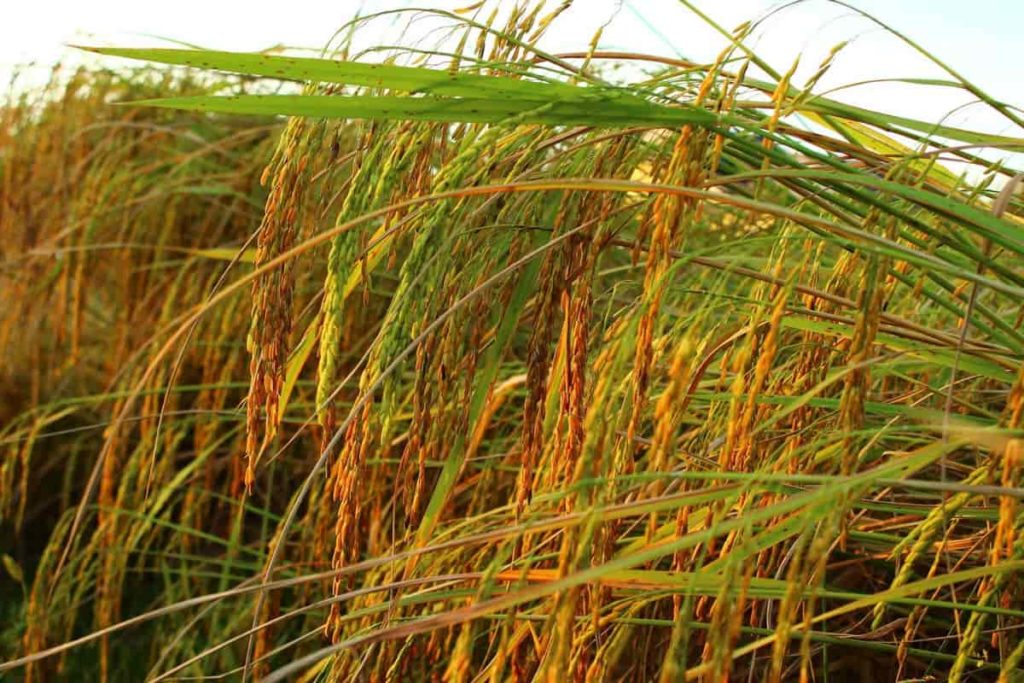
Making the quality of production his priority, he chose to mix his two acres, says Mr. Subbaiah. Besides cultivating paddy and fish on the farm, you can also grow crops on the embankment, says Mr. Subbaiah. He says he produces various flowers and fruits such as tomatoes on his embankment. You can also cultivate bananas tress on the embankment for higher profits, says Mr. Subbaiah.
If we are talking about an acre, the trench should be 8 feet deep, 2 meters wide, and the embankment should be 2 to 2.5 meters wide to support the plants’ growth. However, Mr. Subbaiah’s trench is 8 feet deep (constant for any land size), 4 meters wide, and his embankment is 4 meters wide. Therefore, it nearly costs rupees 50,000 per acre to construct a mixed farm while it costs him rupees 80,000 for the whole land development, says Mr. Subbaiah.
The basic outline of how Mr. Subbaiah’s mixed farm works
First, you should know how Mr. Subbaiah’s fish farm works precisely. In the mixed farming of fish and paddy cultivation, the fish can swim everywhere between paddy plants and have more space to swim in the trench as it is deep. The more area you give to a fish, the more healthy it becomes as you provide a stress-free environment. The feed should be delivered in proper proportions, and it should be organic feed rich in nutrients. When taken by fish, this feed releases their excreta, which acts as a food for the paddy plants.
For their feces to be rich in nutrients, you have to provide organic rich-in-nutrient feed for the fish. The plants’ food solely depends on the fish excreta, and no additional fertilizers are used. So, the more quality fish feed you use, the more healthy your fish grows, and your paddy plants grow. Remember everything you use in this process should be organic, and any chemical-based fertilizers are strictly prohibited for use in this method. Now let us get into the detailed procedure of how Mr. Subbaiah’s farm works.
Mixed farming procedure, according to Mr. Subbaiah
Mr. Subbaiah filled his trench with water and released fish seeds weighing 100 to 150 grams each. An average individual should remove 1200 fish seeds into a trench of 20 cents in size for an acre. While in his 40 cents trench, he released nearly 2400 fish seeds, says Mr. Subbaiah. He selected catla and rohu fish to cultivate on his farm. He released 1600 Rohu fish seeds and 800 Catla fish seeds on his farm. These are freshwater fish and suitable to be cultivated in such trenches, says Mr. Subbaiah.
You must remember that this mixed farming method is a technique under organic farming, so everything you use must be organic for your farm to produce better results. Choosing a feed is an essential parameter for fish cultivation. You should keep in mind that the fish feed you are using can impact the growth of your plants. Don’t choose your feed by looking at the commercial fish farming ponds; there is no link to agriculture.
In case you missed it: Earning Up to 4 Lakhs from Pearl Farming: A Success Story of a Pearl Farmer in India
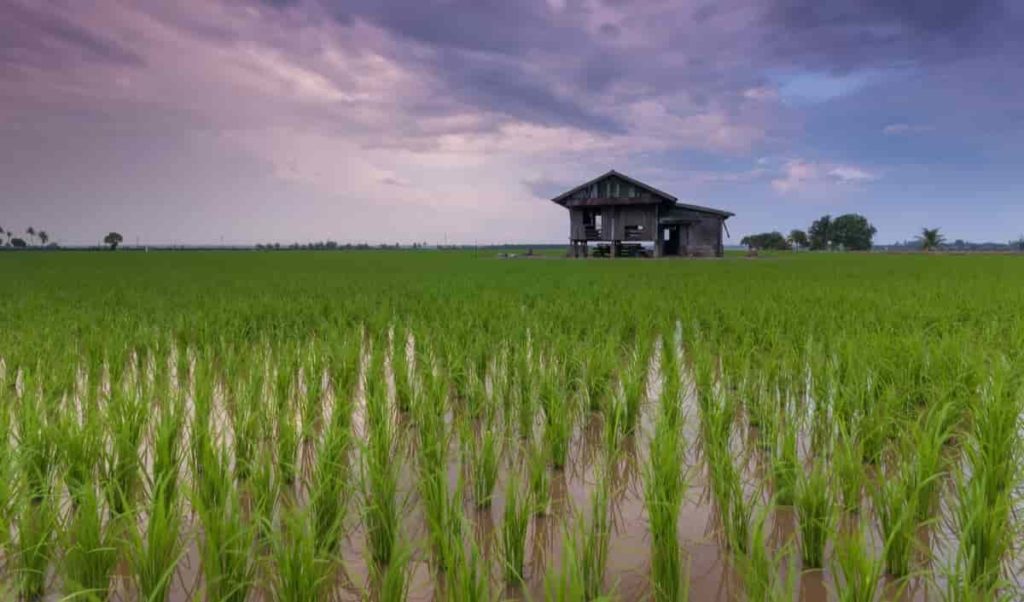
From his experience, Mr. Subbaiah says that it is better to use “Ajola,” “bran” and “Ghana Jeevamrutham” as a feed for fish. This feed can keep fish healthy and make them less prone to diseases. At the same time, the fish excreta is taken as food by the paddy plants. Therefore, if you use the substances mentioned above as feed, then the excreta released by fish is a very healthy intake for the paddy plants.
You also won’t spend much on feed costs because the fish doesn’t wholly rely on your feed. The fish you grow also feeds on the pests, like mosquito eggs and algae available in the field. When the fish eats the harmful pests and algae, it, in turn, benefits your paddy plants by keeping them away from pests and problems. So these fish also act as pest control for your paddy farm. Any way you see it win-win situation if you decide to grow paddy by the mixed farming method.
Mr. Subbaiah used Bahu Rupi, Mettu dhaanyam, and Navaara varieties of paddy on his farm at the start; however, he discovered afterward that the Navara could not be cultivated in such procedure. So now, he uses only Bahu Rupi and Mettu dhaanyam varieties on his mixed farm. Additionally, Mr. Subbaiah also produces different kinds of plants on the embankment. He says he cultivates tomato crops, Mirchi, and a few other vegetables. He also cultivates different types of flowers on the embankment.
When you look closely, you will save many costs compared to the conventional agricultural procedure of cultivating crops. In this method, you do not need to use store-bought fertilizers and insecticides, saving you a lot of investment. All you have to do is select quality fish seeds to cultivate and provide them with quality organic food in proper proportions; this can, in turn, benefit you with high-quality yielding paddy crops.
In case you missed it: Earning 3 Lakh Per Month from Organic Farming: A Success Story of an Agriculture Farmer
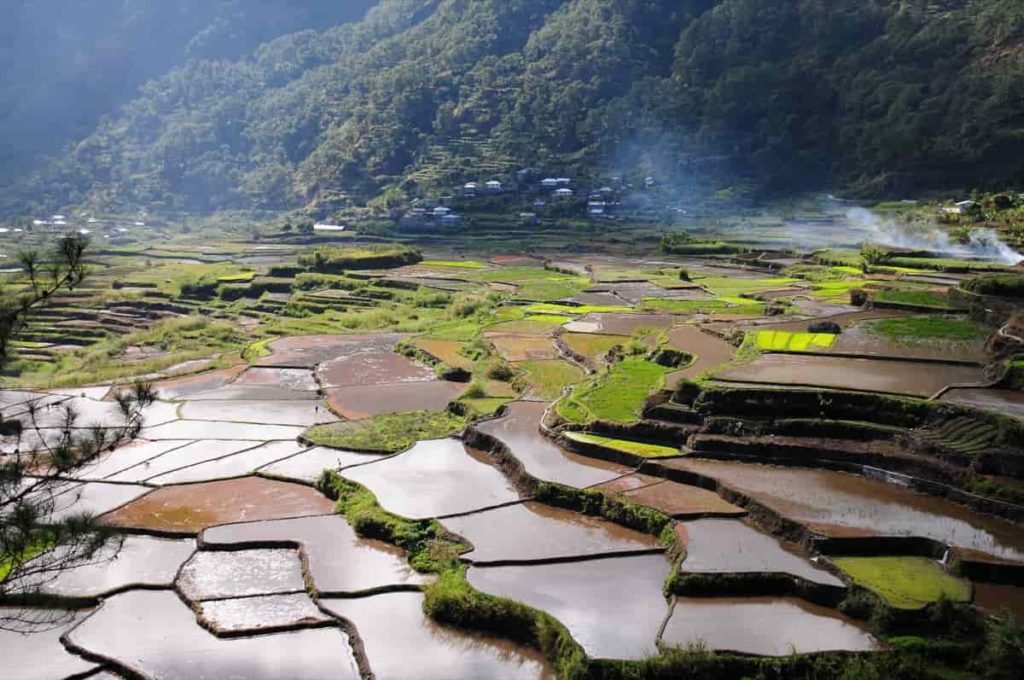
Marketing and finance analysis of Mr. Subbaiah’s mixed farm
It is better to find a way to sell your fish directly to consumers instead of selling to the traders or wholesale distributors when it comes to marketing. This is because you can get more profits by selling the fish directly in the market. This is what Mr. Subbaiah does. From his farm, he gets nearly 2 tons of fish by the time of harvest every year. And he sells this fish for 200 rupees per kg in the market directly to consumers through his small outlets.
There has been a high demand for his fish in his village market since his farm became famous, and everyone knows that the fish he cultivates is healthy. So now, if you calculate the income he gets from selling two tons of his fish yield, it is nearly rupees 3 ½ lakhs (assuming the minimum income he could get). He says fish cultivation cost him nearly rupees 1 ½ lakhs, mainly for buying fish seeds. However, it took him very little money for feed as most of the feed he gave the fish was organic.
If we calculate the profit he gets from fish, it is nearly rupees 2 lakhs, which is a massive profit for a land of two acres. The revenue he gets from paddy and harvesting other plants is additional income; he says that from cultivating paddy and other crops on his two acres, he gets nearly 75,000 profit. So now, if we calculate the total profit that Mr. Subbaiah earns from his mixed farm, it is almost rupees 2,75,000 rupees. This is a very decent profit for a farmer who owns two acres of land.
You can also apply for a subsidy since the government is now supporting such advanced farming techniques. There is a 25% subsidy available under the Aathma scheme under his state government. He advises farmers to make use of such subsidies to support their growth. Mr. Subbaiah wants farmers who own small lands to enter these organic agriculture techniques to gain huge profits. He says that the mixed farming technique in India is still at a nascent stage and has high scope in the future.
In case you missed it: Earning Up to 3 Crores Per Year from Soilless Farming: A Success Story of a Hydroponic Farmer in India
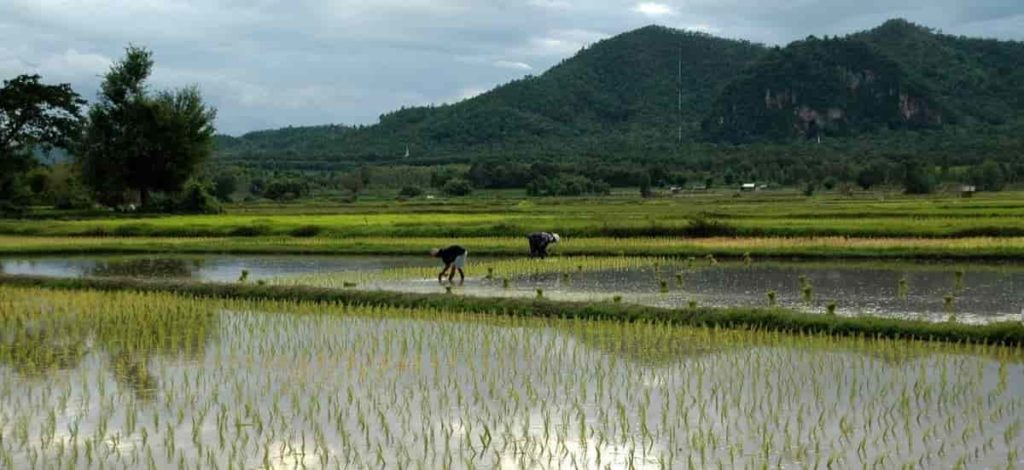
He thinks it is better for farmers who want to enter these agriculture techniques to gain good experience in mixed farming. Then, when the demand for organic produce rises, you can expand such mixed farms to earn huge profits. Mr. Subbaiah is now a proud owner of his mixed farm, has earned the respect of his fellow villagers, and is happily able to generate more than enough income for his family’s needs.
- Economical Aquaculture: A Guide to Low-Budget Fish Farming
- 15 Common Planting Errors That Can Doom Your Fruit Trees
- How to Make Houseplants Bushy: Effective Tips and Ideas
- Innovative Strategies for Boosting Coconut Pollination and Yield
- Pollination Strategies for Maximum Pumpkin Yield
- The Complete Guide to Chicken Fattening: Strategies for Maximum Growth
- Natural Solutions for Tulip Problems: 100% Effective Remedies for Leaf and Bulb-Related Issues
- Revolutionizing Citrus Preservation: Towards a Healthier, Greener Future
- Natural Solutions for Peony Leaf and Flower Problems: 100% Effective Remedies
- Maximizing Profits with Avocado Contract Farming in India: A Comprehensive Guide
- Natural Solutions for Hydrangea Problems: 100% Effective Remedies for Leaf and Flowers
- The Ultimate Guide to Choosing the Perfect Foliage Friend: Bringing Life Indoors
- From Sunlight to Sustainability: 15 Ways to Use Solar Technology in Agriculture
- The Ultimate Guide to Dong Tao Chicken: Exploring from History to Raising
- The Eco-Friendly Makeover: How to Convert Your Unused Swimming Pool into a Fish Pond
- Mastering the Art of Delaware Chicken Farming: Essentials for Healthy Backyard Flocks
- 20 Best Homemade Fertilizers for Money Plant: DIY Recipes and Application Methods
- How to Craft a Comprehensive Free-Range Chicken Farming Business Plan
- Brighten Your Flock: Raising Easter Egger Chickens for Beauty and Bounty
- How to Optimize Your Poultry Egg Farm Business Plan with These Strategies
- Subsidy for Spirulina Cultivation: How Indian Government Schemes Encouraging Spirulina Farmers
- Ultimate Guide to Raising Dominique Chickens: Breeding, Feeding, Egg-Production, and Care
- Mastering the Art of Raising Jersey Giant Chickens: Care, Feeding, and More
- Ultimate Guide to Raising Legbar Chickens: Breeding, Farming Practices, Diet, Egg-Production
- How to Raise Welsummer Chickens: A Comprehensive Guide for Beginners
- How to Protect Indoor Plants in Winter: A Comprehensive Guide
- Ultimate Guide to Grow Bag Gardening: Tips, Tricks, and Planting Ideas for Urban Gardeners
- Guide to Lotus Cultivation: How to Propagate, Plant, Grow, Care, Cost, and Profit
- Agriculture Drone Subsidy Scheme: Government Kisan Subsidy, License, and How to Apply Online
- Ultimate Guide to Raising Araucana Chickens: Breed Profile, Farming Economics, Diet, and Care
- Bringing Hydroponics to Classroom: Importance, Benefits of Learning for School Students
- Ultimate Guide to Raising Polish Chickens: Breed Profile, Farming Economics, Diet, and Care
- Ultimate Guide to Raising Australorp Chickens: Profile, Farming Economics, Egg Production, Diet, and Care
- Silkie Chicken Farming: Raising Practices, Varieties, Egg Production, Diet, and Care
- Sussex Chicken Farming: Raising Practices, Varieties, Egg Production, Diet and Care
- Homemade Feed Formulations for Livestock: Discover Cost-effective Starter to Finisher Feed Recipes